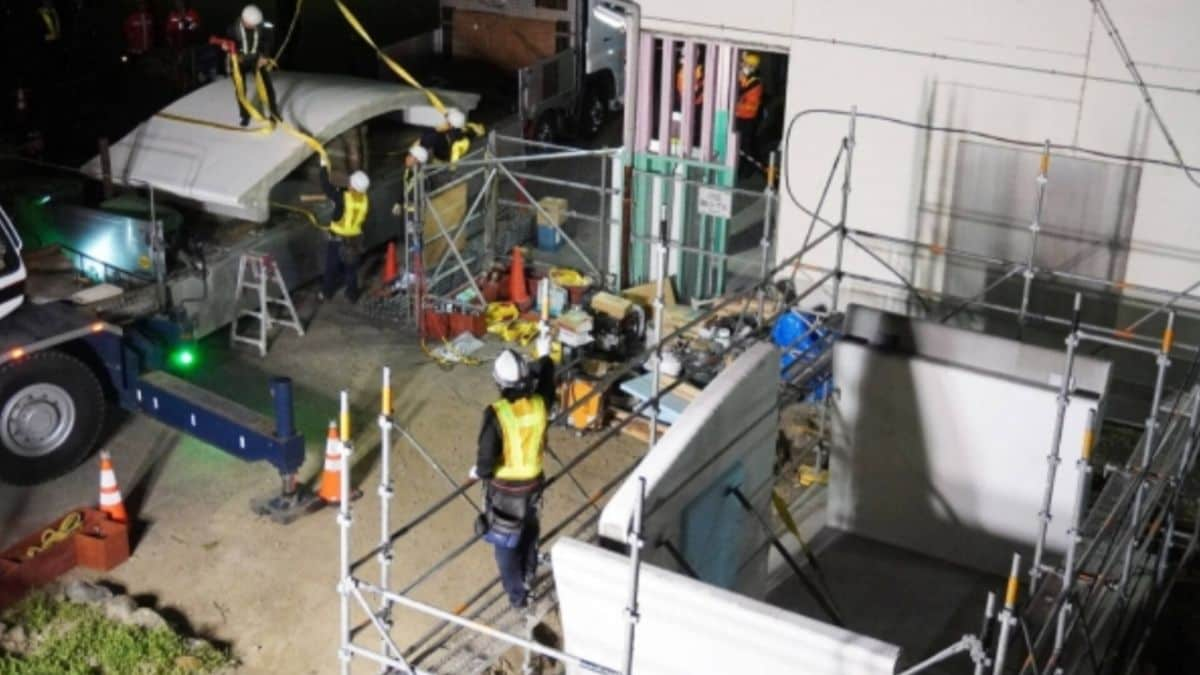Japan’s West Japan Railway Company (JR West) has constructed a train station using 3D printing technology — reportedly the first project of its kind anywhere in the world.
Located in Arida, a small city in Wakayama Prefecture, the new building at Hatsushima Station was assembled in under six hours, setting a new benchmark for speed, efficiency and cost-effectiveness in public infrastructure projects.
This groundbreaking development offers a potential model for addressing rural infrastructure challenges in a country grappling with demographic shifts and labour shortages.
How the new train station was built
The newly built station at Hatsushima replaces a weathered wooden building that had served the community since 1948.
While modest in scale — measuring just 2.6 metres in height and covering an area of around 10 square metres — the new station building holds global significance. JR West has confirmed it is the first train station ever constructed using 3D printing, reported The Japan Times.
The structure comprises four major sections, including the roof and walls. These parts were not printed onsite; instead, they were fabricated by Serendix, a Japanese firm that specialises in 3D-printed construction, at its factory in Kumamoto Prefecture on the southwestern island of Kyushu, reported The New York Times.
Printing the individual components took about a week, following which they were reinforced with concrete and steel.
Once printing and reinforcement were complete, the finished parts were loaded onto trucks on the morning of March 24, 2025, and transported roughly 804 kilometres northeast to Arida.
From delivery to completion in under six hours
As the trucks carrying the printed components arrived at Hatsushima Station on the evening of March 26, several local residents gathered to witness the unique event. The construction began only after the final train of the day departed at 11:57 pm.
Overnight, workers used a large crane to place each of the four segments into position just a few feet away from the old station structure.
By the time the first train of the following day arrived at 5:45 am, the building shell was already in place.
Japan’s 3D-Printed Train Station Revolution: Genius or Gimmick?
In just 6 hours, Japan’s West Japan Railway Co. built a 3D-printed train station, Hatsushima, in rural Arida (Wakayama Prefecture), replacing a 75-year-old wooden relic. Pre-printed parts were assembled overnight… pic.twitter.com/nMtyUJGP9l
— Falah Mousa (@falahmousa) April 9, 2025
In total, the assembly took less than six hours — a dramatic reduction in construction time when compared to traditional methods, which typically require several months of intermittent night work to avoid disrupting train services.
“Normally, construction takes place over several months while the trains are not running every night,” explained Kunihiro Handa, co-founder of Serendix, the firm behind the 3D-printed components, to The New York Times.
The project was timed precisely to fit within the narrow operational window between the last train of one day and the first train of the next — a logistical challenge made feasible by the prefabrication approach and JR West’s meticulous planning.
Affordable, durable & built for seismic resilience
Beyond its speed, the new station building also represents a significant step forward in cost and sustainability. JR West has stated that the project cost roughly half of what a conventional reinforced concrete building of similar size would have incurred.
Structurally, the station is designed to endure the same seismic forces as traditional reinforced concrete houses.
The walls are constructed using mortar layered by 3D printing equipment, with internal hollow sections filled with concrete and reinforced with steel bars, enhancing the building’s ability to withstand earthquakes — a critical requirement in Japan’s seismically active environment.
The outer surface of the station features subtle local references, including embossed images of mandarin oranges and scabbardfish, two products for which the city of Arida is well known.
Although the building’s exterior shell is complete, it is not yet operational. It still requires the installation of essential equipment such as ticketing machines and IC card readers. JR West has indicated that the station is expected to open for public use in July 2025.
Why this was necessary
While small in physical scale, the Hatsushima Station project is seen as a response to larger national issues. With Japan’s population steadily declining and its labour force shrinking, maintaining and upgrading rural infrastructure has become increasingly difficult for rail operators.
Hatsushima Station itself serves about 530 passengers daily, with trains arriving one to three times per hour — a usage level common among many rural stops across Japan.
“We believe that the significance of this project lies in the fact that the total number of people required will be reduced greatly,” said Ryo Kawamoto, president of JR West Innovations, a venture capital unit within the railway company, was quoted by The New York Times.
Automation has already been implemented at the station since 2018, reducing the need for full-time staff. The move to use 3D printing for its replacement further reduces the resources required for upkeep, while maintaining functionality and safety.
For JR West, this project could pave the way for a new standard in station construction, particularly in rural and remote locations where traditional construction is often too time-consuming or cost-prohibitive.
The company has confirmed it is considering broader applications of 3D printing in the reconstruction of other stations in the future.
What Japan’s engineering track record tells us
The success of this project is not an isolated incident but part of Japan’s long-standing tradition of technological leadership in public infrastructure.
From the iconic Shinkansen bullet trains to marvels like the Tokyo Sky Tree and the Akashi-Kaikyo Bridge, Japan has consistently showcased its ability to innovate in the public works domain.
Many of the country’s rail services, including JR West, are operated by private companies — a rarity globally.
This model allows companies not only to run transit systems but also to engage in real estate development, giving them financial and structural flexibility to invest in cutting-edge solutions like 3D-printed facilities.
Japan’s privatised railways stand in contrast to the struggles of similar ventures in other countries. For example, the privatisation of British rail services has often been cited for increasing fares and service issues.
In Japan, however, private ownership has frequently resulted in improved efficiency and higher service standards.
The construction of Hatsushima Station illustrates the country’s unique ability to combine private sector efficiency with public service objectives, ensuring that even smaller communities like Arida — home to just 25,000 people — can benefit from world-leading technology.
Also Watch:
With inputs from agencies



















